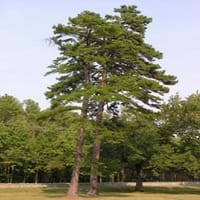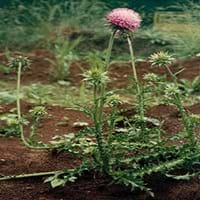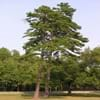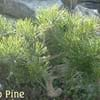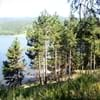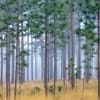Life Span
Perennial
Biennial
Type
Needled or Scaled Evergreen
Bulb, Flowering Plants
Origin
Mid-Atlantic United States, Southeastern United States, South-Central United States, Texas
World/Pandemic, Europe, Asia
Types
Not Available
Crocus tommasinianus, Crocus etruscus, Crocus vernus, Crocus cambessedesii
Number of Varieties
Not Available
Habitat
Woodland Garden Canopy
gardens, Grassland, open Woodlands, orchards, Pastures, tropical environments
USDA Hardiness Zone
6-9
2-10
Sunset Zone
Not Available
21,22
Habit
Oval or Rounded
Upright/Erect
Flower Color
Non Flowering Plant
Red, Violet
Flower Color Modifier
Bicolor
Bicolor
Fruit Color
Brown, Sandy Brown
Not Available
Leaf Color in Spring
Green, Dark Green
Green, Dark Green
Leaf Color in Summer
Green, Dark Green
Dark Green
Leaf Color in Fall
Green, Dark Green
Dark Green
Leaf Color in Winter
Green, Dark Green
Light Green
Leaf Shape
Needle like
Ovate
Plant Season
Spring, Summer, Fall, Winter
Spring, Summer, Winter
Sunlight
Full Sun
Full Sun, Partial Sun
Growth Rate
Medium
Very Fast
Type of Soil
Loam, Sand
Clay, Loam, Sand
The pH of Soil
Acidic, Neutral
Acidic, Neutral, Alkaline
Soil Drainage
Well drained
Well drained
Bloom Time
Early Spring, Late Spring, Mid Spring
Spring, Late Spring, Early Summer, Summer
Tolerances
Drought
Pollution, Drought, Salt, Soil Compaction
Where to Plant?
Ground
Container, Ground
How to Plant?
Cuttings, Seedlings
Seedlings
Plant Maintenance
Medium
Low
Watering Requirements
Average Water Needs
Average Water Needs, Do Not over Water, Never Over-water, Requires regular watering
In Summer
Lots of watering
Lots of watering
In Spring
Moderate
Moderate
In Winter
Average Water
Average Water
Soil pH
Acidic, Neutral
Acidic, Neutral, Alkaline
Soil Type
Loam, Sand
Clay, Loam, Sand
Soil Drainage Capacity
Well drained
Well drained
Sun Exposure
Full Sun
Full Sun, Partial Sun
Pruning
Remove damaged leaves, Remove dead branches, Remove dead leaves
Prune to stimulate growth, Remove damaged leaves, Remove dead leaves, Remove deadheads
Fertilizers
organic fertlizers
Nitrogen, Phosphorous, Potassium, Requires high amount of nitrogen
Pests and Diseases
Littleleaf disease
Insects, Red blotch
Plant Tolerance
Drought
Not Available
Flower Petal Number
Single
Not Available
Foliage Texture
Fine
Coarse
Foliage Sheen
Glossy
Glossy
Attracts
Bees, Butterflies
Flying insects
Allergy
Skin irritation
Diarrhea, Nausea, Vomiting
Aesthetic Uses
Not Used For Aesthetic Purpose
Beautification, Showy Purposes
Beauty Benefits
Not Available
Not Available
Environmental Uses
Air purification
Air purification, Food for insects
Medicinal Uses
Emetic, Laxative, tuberculosis, Vermifuge
Unknown, Unknown
Part of Plant Used
Inner Bark, Wood
Stem
Other Uses
Used for making green dye, Vanillin flavouring is obtained as a by-product
Decoration Purposes
Used As Indoor Plant
No
No
Used As Outdoor Plant
Yes
Yes
Garden Design
Not Available
Not Available
Botanical Name
PINUS echinata
CARDUUS nutans
Common Name
Shortleaf Pine
Musk Thistle, Nodding Thistle
In Hindi
Shortleaf Pine
कस्तूरी थीस्ल
In German
Shortleaf Pine
Nickende Distel
In French
Shortleaf Pine
Musk Thistle
In Spanish
Shortleaf pino
Cardo de almizcle
In Greek
Shortleaf Pine
musk Thistle
In Portuguese
Shortleaf Pine
musk Thistle
In Polish
Shortleaf Pine
Musk Thistle
In Latin
Pinus Shortleaf
Carduus MOSCHUS
Phylum
Coniferophyta
Magnoliophyta
Class
Pinopsida
Magnoliopsida
Family
Pinaceae
Asteraceae
Clade
Not Available
Angiosperms, Asterids, Eudicots
Tribe
Not Available
Cynareae
Subfamily
Pinoideae
Carduoideae
Number of Species
Not Available
Not Available
Difference Between Shortleaf Pine and Musk Thistle
If you are confused whether Shortleaf Pine or Musk Thistle are same, here are some features about those plants to help you choose better. Many people think that these two plants have the same characteristics, but one can see Shortleaf Pine and Musk Thistle Information and learn more about it. Fertilizers required for proper growth of Shortleaf Pine are organic fertlizers, whereas for Musk Thistle fertilizers required are Nitrogen, Phosphorous, Potassium and Requires high amount of nitrogen. Hence, one should know the basic difference between Shortleaf Pine and Musk Thistle if you are planning to have them in your garden to enhance its beauty.
<
Flowering PlantsImportance of Shortleaf Pine and Musk Thistle
Want to have the most appropriate plant for your garden? You might want to know the importance of Shortleaf Pine and Musk Thistle. Basically, these two plants vary in many aspects. Compare Shortleaf Pine and Musk Thistle as they differ in many characteristics such as their life, care, benefits, facts, etc. Every gardener must at least have the slightest clue about the plants he wants to plant in his garden. Compare their benefits, which differ in many ways like facts and uses. The medicinal use of Shortleaf Pine is Emetic, Laxative, tuberculosis and Vermifuge whereas of Musk Thistle is Unknown and Unknown. Shortleaf Pine has beauty benefits as follows: Not Available while Musk Thistle has beauty benefits as follows: Not Available.
Compare Facts of Shortleaf Pine vs Musk Thistle
How to choose the best garden plant for your garden depending upon its facts? Here garden plant comparison will help you to solve this query. Compare the facts of Shortleaf Pine vs Musk Thistle and know which one to choose. As garden plants have benefits and other uses, allergy is also a major drawback of plants for some people. Allergic reactions of Shortleaf Pine are Skin irritation whereas of Musk Thistle have Diarrhea, Nausea and Vomiting respectively. Having a fruit bearing plant in your garden can be a plus point of your garden. Shortleaf Pine has no showy fruits and Musk Thistle has showy fruits. Also Shortleaf Pine is not flowering and Musk Thistle is not flowering . You can compare Shortleaf Pine and Musk Thistle facts and facts of other plants too.
